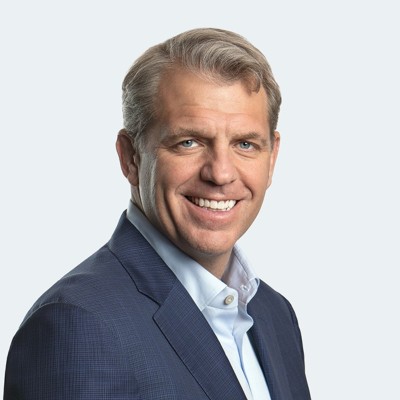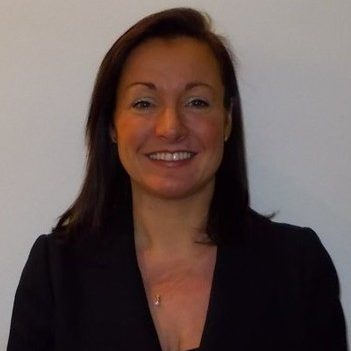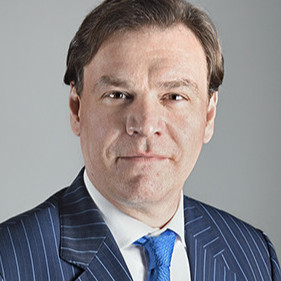This edition of the Investments Roundup features the ICI’s and ISS MI’s report on target date funds; CAIS’ new sports fund; BlackRock’s new buffer ETF; Cerulli’s outlook on ETFs; MMI’s new CAO; Pantheon’s latest evergreen fund; HFR’s 2024 hedge fund data; and Citi’s latest call on 10-year Treasury yields.
Larry’s Take

In its latest Cerulli Edge, the research firm notes financial advisory clients are investing more cash into ETFs than traditional mutual funds. There are many good reasons for this, including market liquidity rather than daily settlements, higher levels of transparency and lower fees, with the absence of mutual funds’ sales loads and 12b-1 fees.
Mutual funds still have their place in this ecosystem, especially with the likes of ERISA plans, as covered in research by ICI and ISS MI. They have served a useful purpose for investors and advisors since surging into prominence in the 1980s and 1990s, and investing pros still find them useful. But mutual funds will have to overcome client expectations for liquidity, transparency and low fees.
Client expectations about many investment ideas, including ETFs versus funds, are typically not driven by in-depth research, but from what they see and hear in the news and from friends and colleagues. They don’t have time to research, so they will call their advisor, who must have the knowledge and resources to manage a conversation that may seem to come out of the blue. Wise firms spend the time and resources to equip advisors for these conversations.
If you want to discuss Larry’s Take further, including how these trends might impact your business, please contact me at larry.roth@rlrstrategicpartners.com.
1. Target Date Funds Ascending In ERISA Realm

A new report from the Investment Company Institute (ICI) and ISS Market Intelligence shines a light on the rise of target date funds in the ERISA plan market.
Target date funds are especially resonating in larger ERISA 403(b) plans, the report noted. From 2009 to 2021, target date funds grew from being offered by 49% of all large ERISA 403(b) plans to 89%.
The report noted mutual funds were the most common investment vehicle of large ERISA 403(b) plans, comprising 68% of large ERISA 403(b) plan assets in 2021. Variable annuities (18%) and fixed annuities (14%) made up the remainder of 403(b) plan assets.
“Mutual funds continue to be a cornerstone of 403(b) plans, underscoring funds’ widespread importance in providing cost-effective, diversified investment options,” clarified Brooks Herman, Managing Director, BrightScope at ISS MI. “Equity and balanced funds play key roles in shaping these retirement portfolios, and falling fund fees further support 403(b) plan participants’ accumulations.”
2. CAIS Prepares New Sports And Entertainment Fund

New York-based CAIS Group is rolling out a rare new fund of its own tracking the sports and entertainment realm. The alternative investment services provider, which partners with over 50,000 financial advisors managing $6 trillion in assets, is set to launch the CAIS Sports, Media, and Entertainment Fund, LP, according to a Form ADV filing.
While CAIS has built its business connecting fund managers and investors, it is edging into new territory with the sports and entertainment fund. One of CAIS’ financial partners, Eldridge Industries, led by Co-Founder and Chairman, and CEO Todd Boehly, who is also on the CAIS board of directors, is also part-owner of the NBA’s Los Angeles Lakers and MLB’s Los Angeles Dodgers and owns a controlling interest in English Premiere League soccer mainstay Chelsea, according to Citywire.
3. BlackRock Out With New Buffer ETF

BlackRock is helping investors looking for shelter from chaotic markets with its newly launched iShares Max Buffer ETF. The fund launched on Jan. 2, 2025, under the ticker symbol DMAX. The new iShares Large Cap Max Buffer Dec ETF (DMAX, trading on the CBOE) seeks to provide up to 100% downside protection and a capped upside of 7.9% for the entire one-year hedge period, net of fees, according to BlackRock.
The new ETF joins the company’s MAXJ and SMAX ETFs, which launched last year and raised $260 million in combined AUM. Over the past five years or so, BlackRock said it has seen option ETFs grow from $5 billion in January 2019 to more than $160 billion assets under management (AUM) last month, as a growing number of investors sought differentiated outcomes, combined with the liquidity, low fees, transparency and tax efficiency provided by an ETF wrapper.
“In today’s turbulent market, Max Buffer ETFs are an important tool for mitigating risk while participating in market growth,” according to Robert Hum, Managing Director, U.S. Head of Factor & Outcome ETFs at BlackRock. “With up to 100% downside protection, they offer a unique opportunity for investors to re-enter the market confidently.”
4. Advisors See ETFs Hurdling Mutual Funds by 2026

Due to growing demand, financial advisors expect exchange-traded funds to surpass mutual funds in client accounts over the next two years, according to Cerulli Associates.
In its latest Cerulli Edge report, the data analysis company noted ETFs will outrank mutual funds by 25% to 24% in client assets invested with advisors by 2026. The report said ETFs are the preferred favorite of wirehouse and independent RIA channels, making 54.6% of retail ETF assets combined.
Cerulli stated that advisors will work closely with wholesalers to optimize the client ETF experience.
“Advisors often do not have time to conduct consistent and in-depth product research independently, and wholesalers can create lasting relationships with advisors by becoming a source of product expertise,” says Daniil Shapiro, director. “As ETFs rise in popularity across new asset classes, asset managers should invest in ETF specialists to ensure they provide the product expertise advisors expect and value.”
5. MMI Welcomes Goodman As New CAO

The Money Management Institute, an industry association representing financial services firms since 1997, has announced the appointment of Elyse R. Goodman as Chief Administration Officer as of Jan. 6, 2025.
A seasoned financial industry executive with experience in strategic initiatives and cultural transformation efforts, Goodman will report directly to MMI President and CEO Craig Pfeiffer, overseeing executive priorities and operational efficiencies to support the association’s strategic objectives.
Goodman previously worked at AlphaSense, as Chief of Staff to the Co-Founder and CEO. At AlphaSense, she helped in the company’s transition from growth to sustainable operations, implementing organizational changes and integrating acquisitions. Goodman also previously served as Chief of Staff at Pagaya and Goldman Sachs.
6. Pantheon Opens Evergreen Infrastructure Fund

London-based Pantheon a global private markets investment firm, is rolling out a new evergreen fund. The company filed for AMG Pantheon Infrastructure Fund (P-BUILD) registration in December.
The new Pantheon fund will provide diversified exposure across multiple infrastructure sectors, including power and utilities, transport and logistics, and digital. The fund will include secondaries, which its managers plan to use to acquire interests in existing portfolios and assets at potential discounts. Pantheon has been investing in private markets secondaries since 1988 and holds $21.4 billion in total discretionary AUM in infrastructure.
“P-BUILD is an exciting opportunity for Pantheon to bring our institutional infrastructure secondary investment expertise to bear in an innovative evergreen structure for the US private wealth market,” said Andrea Echberg, Pantheon Partner and Head of Infrastructure. “We are in the midst of a particularly robust market environment for infrastructure secondaries, and Pantheon is well positioned to build portfolios of high-quality assets to deliver strong risk-adjusted returns for our investors.”
7. Hedge Funds End 2024 On the Plus Side, With New Issues Outpacing Liquidations

HFR reports hedge funds holding modest gains in December, closing out a volatile year emphasizing a huge presidential election, continuing high inflation, rising geopolitical risk and elevated cryptocurrency prices.
The HFRI Fund Weighted Composite Index (FWC) slid -0.2% for the month after surging 2.6% in November, with an annual 2024 gain of 10.0%. The HFRI Asset Weighted Composite Index rose 0.8% in December after posting a 2.1% gain for November, for an annual gain of 9.1%. Uncorrelated Macro and Relative Value Arbitrage strategies led in strategy gains. At the same time, “directional Equity Hedge and Event Driven exposures declined, with each of these paring strong annual gains and the most substantial single monthly return for 2024 in November,” HFR reported.
“Hedge funds gained to conclude a volatile and uncertain 2024, navigating a very different market environment than the election euphoric, risk-on sentiment that dominated November, as equities declined and bond yields rose, and as persistent inflationary pressures tempered expectations for US Federal Reserve rate cuts in 2025,” said Kenneth J. Heinz, President of HFR.
8. Citi Wealth Sees 10-Year Yields Potentially Reaching 5%

Less than five years ago, 10-year U.S. Treasury yields stood at 0.54% on July 27, 2020. An analysis by Citi Wealth shows that 10-year yields may reach 5%.
“Close to five (percent yields on 10-year Treasurys) is certainly possible” in 2025, said Steven Wieting, Chief Investment Strategist and Chief Economist at Citi, according to Bloomberg. “Five would be something that we would think would be really appealing.”
With President-elect Donald Trump promising tariffs an aggressive effort to spur the U.S. economy, which could lead to inflationary pressures, 10-year yields closed at 4.69% on Jan. 9, 2025. That’s up from a close of 3.64% on Sept. 16, 2024. Citi currently predicts 10-year Treasury yields finishing 2025 at 4.75%, with the Fed Funds rate landing at 3.75%.
Julius Buchanan, Editor in Chief at Wealth Solutions Report, can be reached at jbuchanan@wealthsolutionsreport.com.














